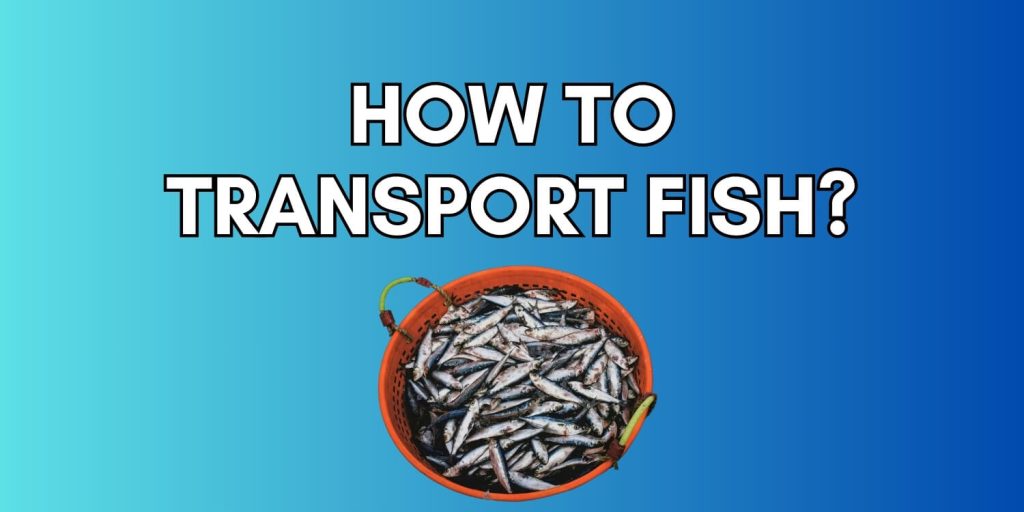Moving can be easy if you plan ahead. Every pet, no matter how small, deserves a safe and smooth move.
Fish are calming to have around but they are also fragile. If you're relocating and need to move your fish, they can usually stay safe for up to 48 hours during travel. To ensure their well-being, you’ll need proper preparation and the right containers.
Professional movers cannot transport pets, including fish, so you’ll need to make your own arrangements.
If you're driving and your trip is under 48 hours, you can take your fish with you in the car. Just make sure not to leave them alone overnight.
For longer trips, you might need other options. One choice is flying with your fish but each airline has different rules, so check their policies in advance. Some pet stores offer boarding services and can also ship fish by air if needed. Shipping companies like UPS, FedEx or USPS may also be an option.
If you plan to fly, book early since airlines have limits on how many pets can travel on a flight. There may also be extra fees. Additionally, check state laws to make sure your fish species is allowed at your destination or in states you’ll pass through.
Getting Your Fish Ready for Travel
Fish are sensitive to changes but with proper care, they can adjust well to a new home. To ensure a safe move, follow these steps:
- Refresh the Water: About five days before moving, change 20% of the water in the tank. This helps keep it clean and safe for your fish.
- Pause Feeding: Stop feeding your fish one to two days before the move. They can go without food for up to a week and this keeps the water cleaner.
- Pack at the Right Time: Your fish should be the last thing you pack before leaving. The less time they spend in transit, the better. Once you arrive, unpack them first.
Ways to Transport Your Fish Safely
You have several options to move your fish securely:
Plastic Bags
- Use strong plastic bags from pet stores.
- Fill one-third of the bag with water from the aquarium.
- Pack each fish in its own bag—never put multiple fish together.
- Double-bag for extra protection by placing one bag inside another.
- Seal the bag tightly with a rubber band.
- If the journey is longer than an hour, add pure oxygen to the bag.
Buckets
- A clean, unused 5-gallon bucket works well for multiple fish.
- Fill it with aquarium water and use a lid that seals tightly.
Containers
- A sturdy container with a secure lid is ideal, especially for fish with sharp fins.
- Use aquarium water and ensure there’s enough space for movement.
Moving the Tank
If you have a small aquarium, you can move it with some water and the fish inside.
For larger tanks
- Never transport them with fish inside.
- Take out the filter, decorations, rocks and plants.
- Drain most of the water before moving.
- Since tanks are fragile, there's a risk of damage which could also harm your fish.
Moving Live Plants
If your tank has live plants, place them in plastic bags with some aquarium water to keep them alive. This helps preserve the helpful bacteria in the tank.
Ensuring Enough Oxygen
No matter which container you use—plastic bags, buckets or other containers—make sure there’s enough space for water and air.
- Fill only one-third of the container with water and leave the rest for oxygen.
- If using bags or small containers, keep them in an insulated carrier like a Styrofoam cooler.
- Use bubble wrap to keep the bags from moving around during transport.
Following these steps will help your fish stay safe and comfortable during the move. If you need more guidance, resources like the American Veterinary Medical Association (AVMA) provide useful information.
Traveling with Your Fish
When moving your fish, keeping the water temperature stable is crucial for their well-being. If you're traveling by car, place them where they can get proper airflow from the air conditioning or heating system, depending on the weather. Avoid exposing them to direct sunlight or extreme temperatures.
To help keep your fish calm during the journey, consider covering their container with a cloth or sheet. A darker environment can reduce their movement and stress making the trip easier for them. Ensuring a smooth and stable ride will also prevent unnecessary agitation.
Settling Your Fish into Their New Home
When you arrive at your new home, your first priority should be getting your fish settled. Set up the tank by placing all decorations, rocks and other items back in place. Reinstall the filters, pumps and heaters to make sure the environment is stable. If you have live plants put them back into the tank as well.
If your fish traveled in a bucket, you can pour both the water and the fish directly into the tank or use a net to transfer them carefully. If they were in plastic bags, let the bags float in the tank for a while so the water temperatures can adjust. Once the temperature inside the bag matches the tank, gently release your fish into their new home.
With your fish safely in place, you can then focus on unpacking the rest of your belongings, knowing they are comfortable and secure.
FAQs – How to Transport Fish
How do I transport fish in a car?
To transport fish in a car, place them in a secure container like a plastic bag, bucket or small tank. Keep the container steady and use the car’s air conditioner or heater to maintain a comfortable temperature for your fish.
If you’re moving in or around Chicago, professional services like Chicago Packers and Movers can provide helpful tips for your move, though they don’t transport pets or fish themselves.
How do I transport fish when moving?
Before moving, change 20% of the water in the aquarium a few days ahead of time. Use water from the tank to transport your fish in plastic bags or buckets. Always pack the fish last and unpack them first when you arrive at your new home. Make sure to set up their tank before placing them back into the water.
How do I transport fish on a long-distance car trip?
For long-distance moves, use insulated containers to keep the water temperature steady. Fill only one-third of the container with water and leave room for air. During longer trips, take breaks and check that your fish are safe. You can also contact Chicago Packers and Movers for advice on managing your move smoothly.
How to Transport Fish Long Distance?
For long-distance travel, fish can be moved in well-sealed plastic bags with added oxygen or in a bucket with a secure lid. If the trip is longer than 48 hours, flying with your fish or using a pet shipping service may be a better option.
How Are Fish Transported to Pet Stores?
Pet stores receive fish in sealed plastic bags filled with water and pure oxygen. These bags are packed in insulated boxes or containers to keep the temperature stable during transit.
How to Safely Transport a Betta Fish?
A betta fish should be transported in a small container with a lid, like a cup or plastic bag, filled with water from its current tank. Keep the water at the right temperature and cover the container to reduce stress. For longer trips, using an insulated carrier is recommended.
How to Transport a Fish on a Plane?
Before flying with a fish, check the airline’s rules. Fish should be packed in a clear, leak-proof plastic bag with oxygen and placed inside an insulated container. Make sure the container meets airline requirements and book early to ensure space for your pet.
How to Transport Big Fish?
For larger fish, use a strong container like a large bucket or a specialized fish transport tank. Fill it partly with water from their aquarium and make sure it has a secure lid. The container should be well-insulated and spacious enough for the fish to move comfortably without stress.
How to Transport Fish Across the Country?
If you need to move fish across the country, flying with them or using a pet transportation service is the safest option. Pack them in insulated containers with enough water and oxygen. If driving, ensure the containers stay stable and that the temperature remains steady throughout the trip.
How to Transport Fish Over Short Distances?
For short trips, fish can be transported in plastic bags or small containers filled with water from their tank. Keep the container steady in the car and avoid sudden movements. Once you arrive, unpack them quickly and reintroduce them to their tank to minimize stress.
With careful preparation, even the most delicate fish can travel safely to their new home.

